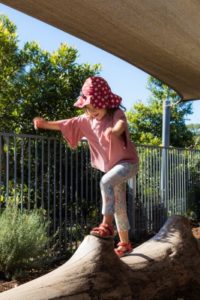
The 3-6 environment is called a Casa dei Bambini, or House of Children. It provides the opportunity for the children under the guidance of the directress to choose from a wide variety of graded materials which they can work through adding in complexity as their abilities increase. The environment incorporates outdoor and indoor space. The two spaces complement each other and are available at all times.
Daily activities stem from adults close observations of individual needs rather than a prepared curriculum
Development at this stage occurs in six main areas.
- movement
- language
- refinement of the senses
- order
- acquisition of the social customs and behavior of the child's culture and society
- mathematics
Children approaching the age of six work in a smaller group enabling them to focus on extension activities preparing them for primary school.
Headland is registered with the New South Wales Education authority to deliver the Kindergarten program enabling children who are turning 6 to finish our 3 year program.
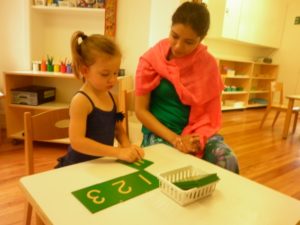 There is a permanent Lead Directress/Director and Assistant Directress/Director for each classroom and a dedicated outdoor educator. They are further assisted by floating staff members between the two classrooms.
There is a permanent Lead Directress/Director and Assistant Directress/Director for each classroom and a dedicated outdoor educator. They are further assisted by floating staff members between the two classrooms.
. “It is true – we cannot make a genius …. We can only give each individual the chance to fulfil his potential possibilities to become an independent, secure and balanced human being “
- Maria Montessori
Learning Areas
The Montessori classroom is divided into five key learning areas:
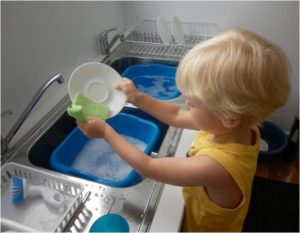
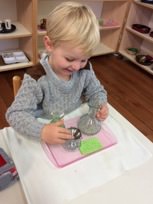
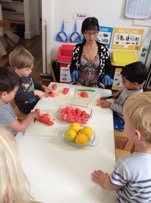
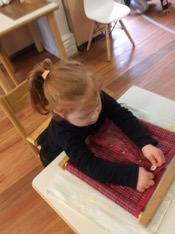
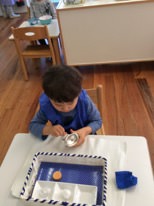
”a child’s work is to create the man he will become. An adult works to perfect the environment but a child works to perfect himself“ - Maria Montessori
These exercises form the foundation of the Montessori classroom. Activities such as sweeping, sewing, food preparation and polishing enable the child to participate in daily life and promote the development of concentration, hand-eye co-ordination and muscular control. Constant repetition strengthens the child’s muscles and creates confidence in a particular skill. The classroom activities satisfy the need for meaningful activity. They also satisfy the need for imitation which is such a strong urge during these early years.
"Any child who is self-sufficicent, who can tie his shoes, dress or undress himself, reflects in his joy and sense of achievement, the image of human dignity, which is derived from a sense of independence". Maria Montessori
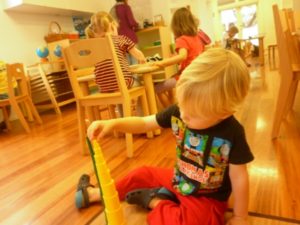
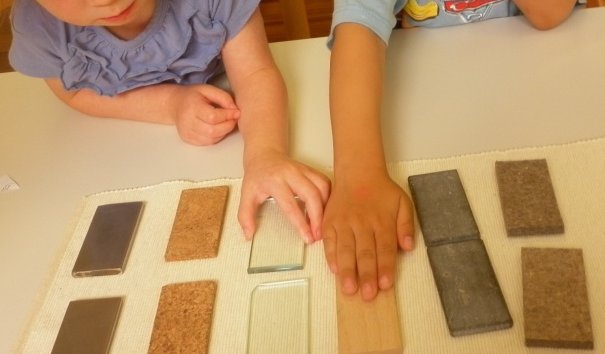
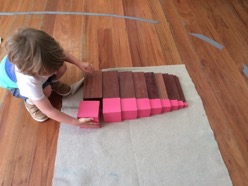
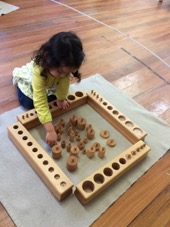
The young child learns to understand the world around him through his senses. Each of the materials isolates one defining quality and assists the child in grasping abstract concepts like weight, length, colour and shape through emphasis of that quality. The classroom is full of activities that stimulate the senses.
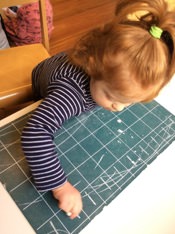
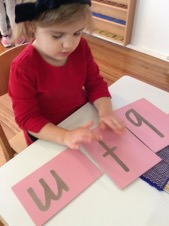 The child at this stage has a natural sensitivity for language development and a never ending fascination for words. The materials are designed to encourage the acquisition of new vocabulary, to promote muscular control for writing and to learn the shape of the letters and associated sounds through the sandpaper letters and moveable alphabet. The indirect preparation of the materials leads the child to the moment when he “explodes into writing and reading “ without any forced effort.
The child at this stage has a natural sensitivity for language development and a never ending fascination for words. The materials are designed to encourage the acquisition of new vocabulary, to promote muscular control for writing and to learn the shape of the letters and associated sounds through the sandpaper letters and moveable alphabet. The indirect preparation of the materials leads the child to the moment when he “explodes into writing and reading “ without any forced effort.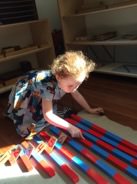
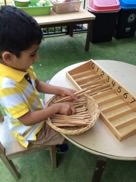
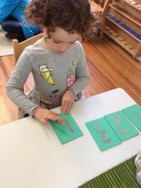 Montessori believed that if a child has access to mathematical equipment in these early years he joyfully absorbs many facts and skills. Mathematical concepts are learned through the manipulation of concrete materials. Maths materials are designed to take the child from a concrete concept of numbers to an abstract level of understanding. They introduce the meaning of numbers 1-10, through to the comprehension of the decimal system and the processes of addition, subtraction, multiplication and division.
Montessori believed that if a child has access to mathematical equipment in these early years he joyfully absorbs many facts and skills. Mathematical concepts are learned through the manipulation of concrete materials. Maths materials are designed to take the child from a concrete concept of numbers to an abstract level of understanding. They introduce the meaning of numbers 1-10, through to the comprehension of the decimal system and the processes of addition, subtraction, multiplication and division.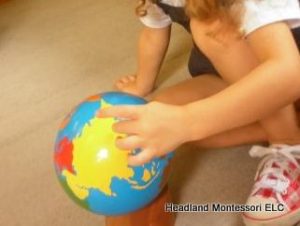
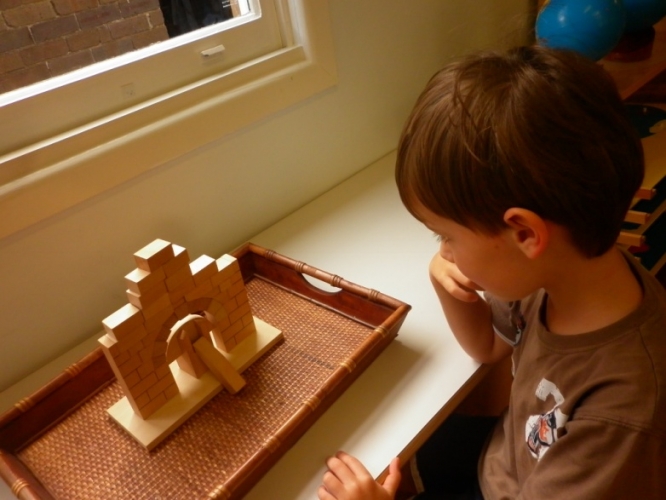
 The cultural equipment exposes the child to the world through geography, botany and science materials like the puzzle maps, land and water forms, simple science experiments and the botany cabinet.
Children are also given the opportunity to experience and create in cultural areas such as art, craft, drama, music and dance. These activities enable them to develop their imaginative responses and their creative self-expression.
The cultural equipment exposes the child to the world through geography, botany and science materials like the puzzle maps, land and water forms, simple science experiments and the botany cabinet.
Children are also given the opportunity to experience and create in cultural areas such as art, craft, drama, music and dance. These activities enable them to develop their imaginative responses and their creative self-expression. Children are taught, through modelling and role-playing, the steps required to build awareness and responsiveness towards those around them.
Children are taught, through modelling and role-playing, the steps required to build awareness and responsiveness towards those around them.